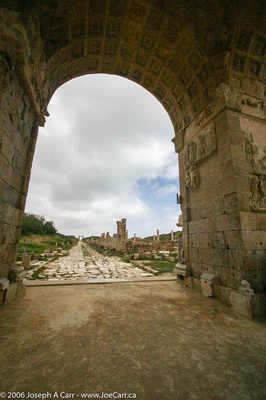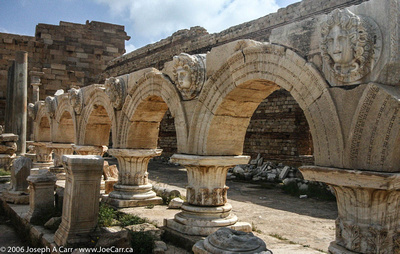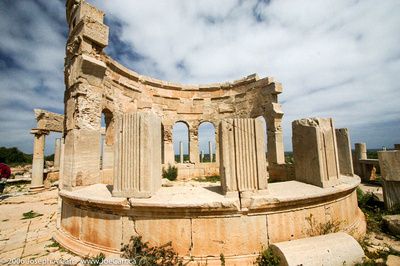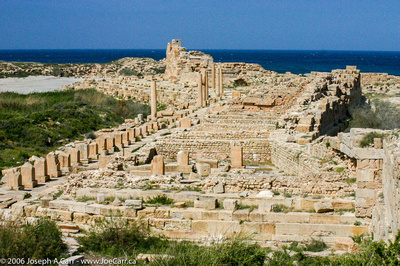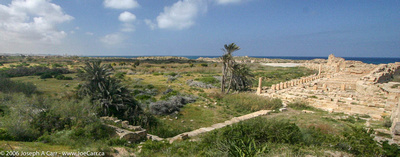2006 Total Solar Eclipse – Libya
March 26, 2006 – Sunday – Leptis Magna, Libya
Today, on our second full day in Libya, we travel to the ancient Roman city of Leptis Magna, 120km east of Tripoli.
It looks like Fatid (from Numidia Tours) will be our tour leader throughout our stay in Libya, and again, we also have a member of the Tourist Police on board. Part way to Leptis Magna we pass through a check point, and papers are given to the officials before we proceed.
Like Sabrata, Leptis Magna is a huge ancient city located on the Mediterranean Sea. It is a much bigger city than Sabrata. There is a huge arch at the entrance to the city erected by Septimus Severus, who was the emperor of the Roman Empire for several years, and who was a resident of the city at the time. There is a huge theatre, impressive roads, a harbour, and temples galore.
On the return trip back to Tripoli we pass through two more checkpoints. As we travel in Libya over the coming days, we become used to these check points. It appears Libyan citizens are not free to travel their country unless they have good reason to do so. I expect if their papers are not in order, they will be turned around and sent back at these check points.




